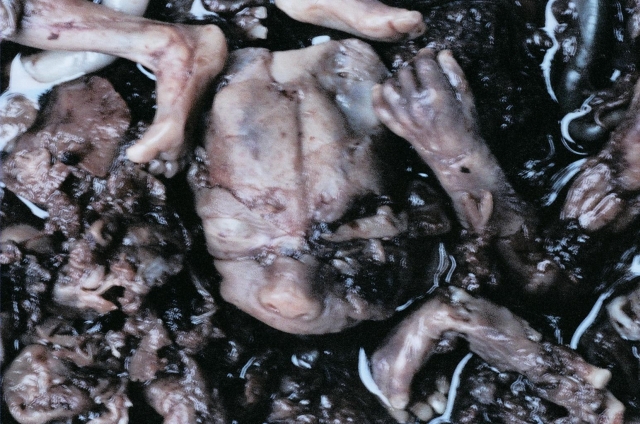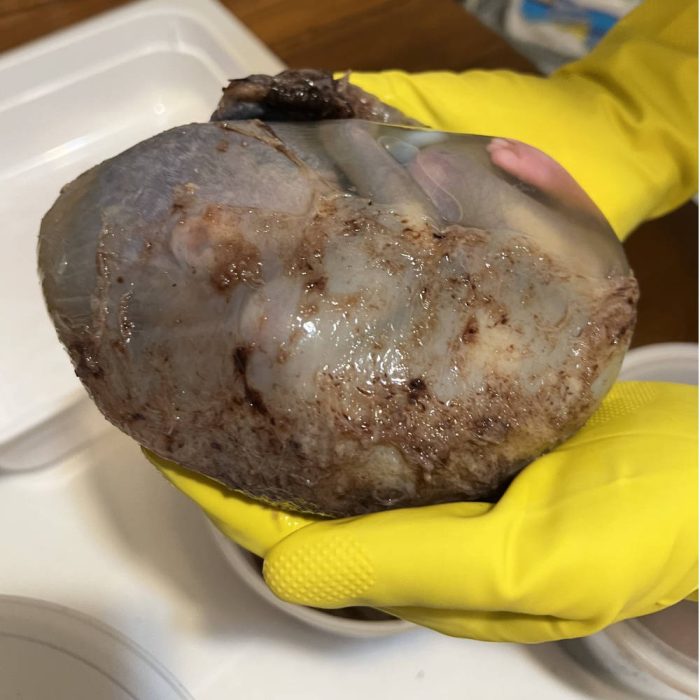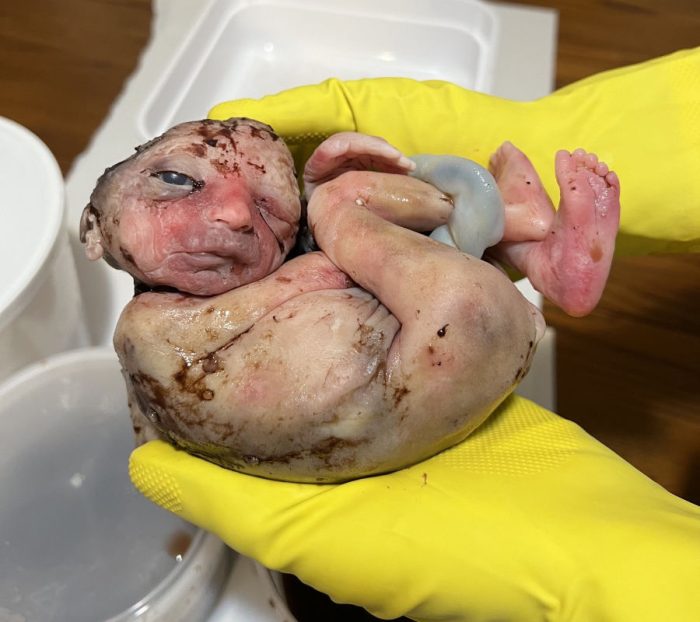Seventy-six years ago in January of 1948, police officers in Japan made a series of gruesome discoveries. They found the remains of five infants killed by a midwife. Then they discovered 40 murdered infants in a nearby mortician’s office, and 30 more in a local temple.
It was just over two years since the end of World War II, and Japan was facing a crisis. Ten million people were declared to be at risk of starvation, and infanticide had become the norm when it came to newborn baby girls. Infanticide, called mabiki in Japan, was acceptable and “more or less legal,” according to the “Oxford Textbook of The Newborn, A Cultural and Medical History,” because of the low economic status of so many Japanese couples.
WARNING: Readers may find content disturbing.
View this post on Instagram
Miyuki Ishikawa was a Japanese midwife who became a serial killer of more than 100 babies — crimes she committed likely because she saw an opportunity to make money. The parents of these children were financially strained, and felt as though they were unable to raise their children because of those financial difficulties. At first, Ishikawa allegedly allowed the infants to die of neglect, but she eventually began to be paid for the ‘service’ of actively killing these children. She was aided in her new career by her husband, Dr. Shiro Nakayama. While Ishikawa and her husband carried out the actual murders, Nakayama falsified the death certificates.
The parents may have been traumatized by the act of having their children killed, but they unfortunately viewed it as their only option. It’s the same way women have viewed abortion in the U.S. for decades.
An Instagram account called @realhistoryuncovered shared information about Ishikawa, stating that she spent just four years in prison for the murders after the “ghoulish enterprise came crashing down…”
But what Ishikawa did in killing newborn infants, while indeed “ghoulish,” was no different than if she had killed those same infants weeks or months before birth. Abortion was legalized in Japan in 1948 under the Eugenic Protection Law following the discoveries of the babies Ishikawa had killed. The government wanted to curb population growth. And like the couples who sought Ishikawa’s “help,” women today who seek out abortion are desperate and see abortion as the best way out of a difficult situation.
At first, Ishikawa took the infants from their parents and neglected them, depriving them of the necessary nourishment they needed to live. The abortion pill does this as well, and is presented as the ‘easy’ way to have an abortion. The woman swallows the first drug — mifepristone — which blocks the naturally occurring pregnancy hormone progesterone, and the baby is deprived of nutrients to essentially force the woman’s body to neglect her growing baby. The second pill, misoprostol, causes the woman to have contractions, which expel the body of her preborn child. And though there are potentially serious risks to the woman, the abortion industry markets this as nothing more than a missed period.
The abortionist may have given the woman the pills, but he didn’t actively kill the child with his own hands — much like Ishikawa neglected her first victims without actually getting her hands bloody.
But Ishikawa changed gears and soon began actively killing the babies. In dilation and curettage (D&C) abortions, dilation and evacuation (D&E) abortions, and induction abortions, the abortionist also actively causes the preborn child’s death. In a first-trimester D&C, he uses a suction machine that rips the tiny baby apart as it ‘vacuums’ out the uterus with excessive force. In a second-trimester D&E dismemberment abortion, the abortionist uses a sopher clamp to grasp the baby’s arms and legs and rip them off of her body. He then crushes her skull, removing each piece of her body from her mother’s uterus before putting it back together to check for any missing pieces. In a third-trimester induction abortion, the baby is injected with feticide to cause her heart to stop beating.

Face of a preborn child with feet, hand, rib cage, blood and placenta. Aborted at 21 weeks using the D&E abortion procedure.
These acts of abortion are no different from what Ishikawa did; it’s only that the baby’s size and location differ. In the cases of abortions that take place late in pregnancy, the babies killed are often viable and look like newborn infants.
In March of 2022, pro-life activists discovered the bodies of 110 children in a medical waste bin outside of a Washington DC abortion business. Most of them were killed in the first trimester. Underneath was a plastic bag, containing the five children who seemingly died by late abortions, and whom experts have stated were likely babies who could have survived outside the womb.
What those pro-lifers saw that day was much like what police likely saw when they discovered the first remains of five infants killed by Ishikawa. Her acts of infanticide and these abortions are indistinguishable.

Baby Phoenix was found still in the amniotic sac in a medical waste bin outside a DC abortion business. Photo courtesy of Progressive Anti-Abortion Uprising.

Baby Harriet found in medical waste bin outside DC abortion facility. Photo courtesy of Progressive Anti-Abortion Uprising.
In addition, the reasons parents sought infanticide in Japan in the 1940s mirror the reasons parents are seeking abortion in the United States in 2024. The people of Japan were economically desperate and starving. They didn’t believe they had the resources to care for their child and wrongly believed the child was better off dead. Rather than finding a way to help the families, Ishikawa killed their children for profit.
The abortion industry operates the same way. It sees women in heartbreaking situations, full of fear about their ability to care for their babies, and takes advantage of that fear so it can profit off of the killing of the women’s children. Abortion businesses don’t offer women actual support, they don’t give women real options. They confirm the women’s fears, sell them abortion as a solution, and then send them back to their negative circumstances with the added trauma of abortion.
Editor’s Note 1/22/24: This article was updated with information on five of the babies discovered in a medical waste bin in March 2022.







